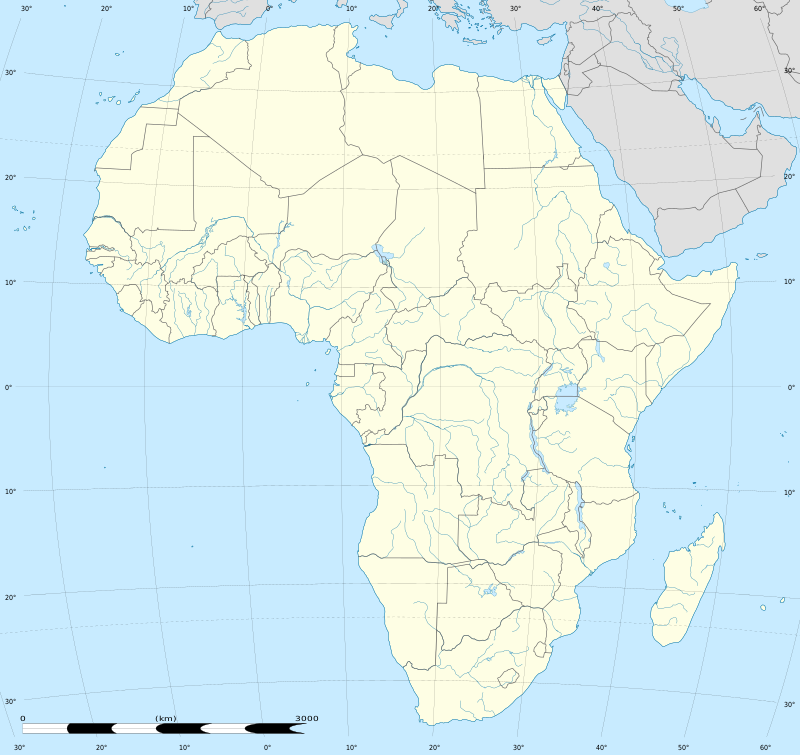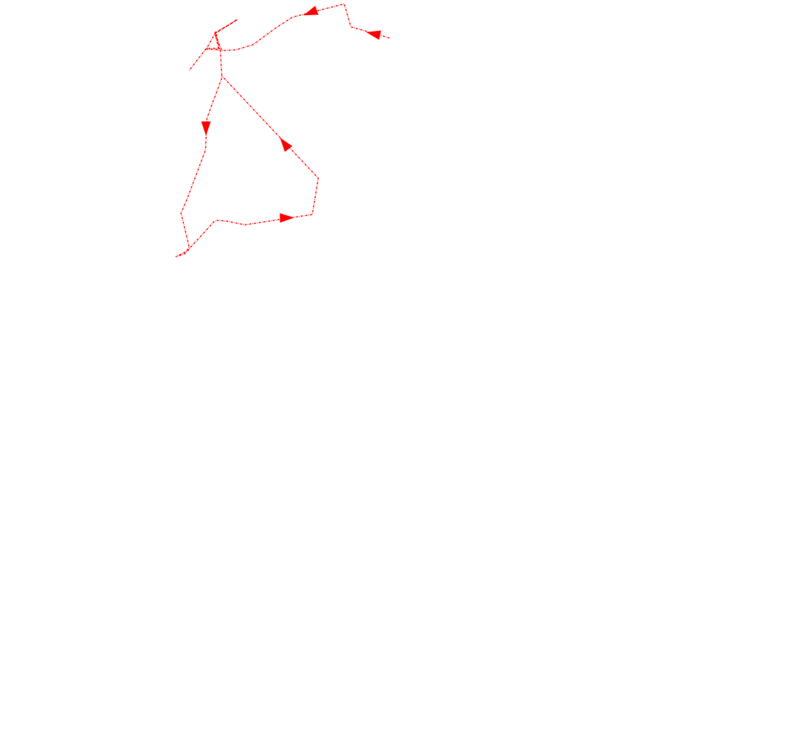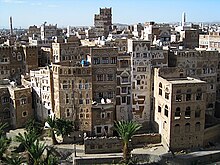Ibn Battuta was a Muslim Moroccan scholar and explorer who travelled extensively in Afro-Eurasia, largely in the lands of Dar al-Islam, travelling more than any other explorer in pre-modern history, totalling around 117,000 km (72,000 miles), surpassing Zheng He with about 50,000 km (30,000 miles) and Marco Polo with 24,000 km (15,000 miles). Over a period of thirty years, Ibn Battuta visited most of southern Eurasia, including Central Asia, Southeast Asia, South Asia, China, and the Iberian Peninsula. Near the end of his life, he dictated an account of his journeys, titled A Gift to Those Who Contemplate the Wonders of Cities and the Marvels of Travelling, but commonly known as The Rihla.
Biography
Early life

A 13th-century book illustration produced in Baghdad by al-Wasiti showing a group of pilgrims on a hajj.
All that is known about Ibn Battuta’s life comes from the autobiographical information included in the account of his travels, which records that he was of Berber descent, born into a family of Islamic legal scholars in Tangier, known as qadis in the Muslim tradition in Morocco, on 24 February 1304, during the reign of the Marinid dynasty. His family belonged to a Berber tribe known as the Lawata. As a young man, he would have studied at a Sunni Maliki madh’hab (Islamic jurisprudence school), the dominant form of education in North Africa at that time. Maliki Muslims requested Ibn Battuta serve as their religious judge as he was from an area where it was practised.
His name
Europeans are sometimes puzzled by Arabic/Islamic naming conventions, which mostly don’t include a given, middle, or family name. Instead they tend to have a potentially lengthy series of epithetic, aspirational, and/or patronymic names.
In this case, ibn Battuta simply means “son of Battuta”, but this may have just been a nickname since “battuta” means “duckling”. His most common “full name” is given as Abu Abdullah Muhammad ibn Battuta, which simply means “Father of Abdullah (and Abdullah means “worshipper of Allah”), Praiseworthy son of Battuta”. But many authoritative texts will go on longer, adding more of his acquired name sequence. In his travelogue, the Rihla, he gives his full name as Shams al-Din Abu’Abdallah Muhammad ibn’Abdallah ibn Muhammad ibn Ibrahim ibn Muhammad ibn Yusuf al-Lawati al-Tanji ibn Battuta.
Itinerary 1325–1332
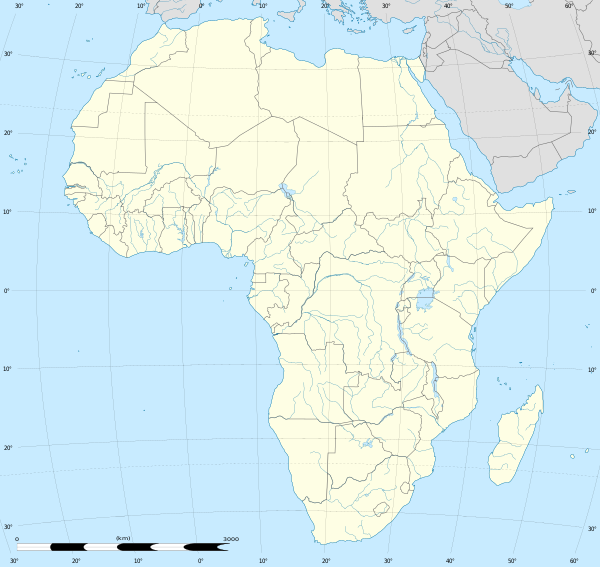
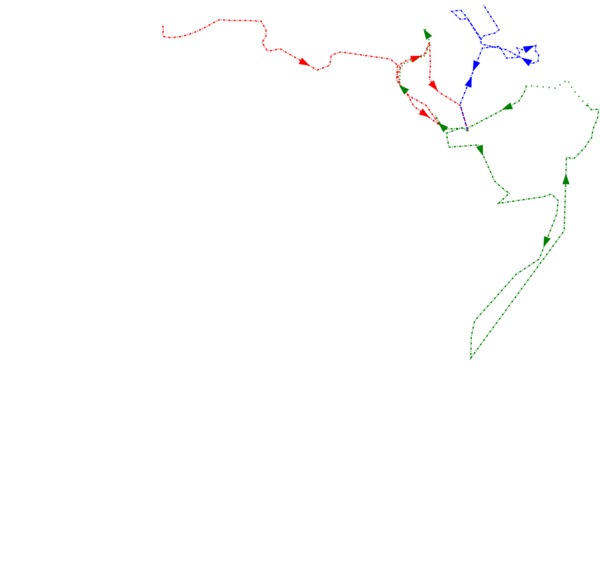
Ibn Battuta Itinerary 1325–1332 (North Africa, Iraq, Iran, the Arabian Peninsula, Somalia, Swahili Coast)
First pilgrimage
In June 1325, at the age of twenty-one, Ibn Battuta set off from his hometown on a hajj, or pilgrimage, to Mecca, a journey that would ordinarily take sixteen months. He was eager to learn more about far-away lands and craved adventure. No one knew that he would not return to Morocco again for twenty-four years. Little did he know that this journey would be perhaps the most epic adventure in history.
“I set out alone, having neither fellow-traveller in whose companionship I might find cheer, nor caravan whose part I might join, but swayed by an overmastering impulse within me and a desire long-cherished in my bosom to visit these illustrious sanctuaries. So I braced my resolution to quit my dear ones, female and male, and forsook my home as birds forsake their nests. My parents being yet in the bonds of life, it weighed sorely upon me to part from them, and both they and I were afflicted with sorrow at this separation.”
He travelled to Mecca overland, following the North African coast across the sultanates of Abd al-Wadid and Hafsid. The route took him through Tlemcen, Béjaïa, and then Tunis, where he stayed for two months. For safety, Ibn Battuta usually joined a caravan to reduce the risk of being robbed. He took a bride in the town of Sfax, but soon left her due to a dispute with the father. That was the first in a series of marriages that would feature in his travels.

Ottoman 17th century tile depicting the Kaaba, in Mecca
In the early spring of 1326, after a journey of over 3,500 km (2,200 mi), Ibn Battuta arrived at the port of Alexandria, at the time part of the Bahri Mamluk empire. He met two ascetic pious men in Alexandria. One was Sheikh Burhanuddin, who is supposed to have foretold the destiny of Ibn Battuta as a world traveller and told him “It seems to me that you are fond of foreign travel. You must visit my brother Fariduddin in India, Rukonuddin in Sind, and Burhanuddin in China. Convey my greetings to them”. Another pious man Sheikh Murshidi interpreted the meaning of a dream of Ibn Battuta that he was meant to be a world traveller.
He spent several weeks visiting sites in the area, and then headed inland to Cairo, the capital of the Mamluk Sultanate and an important city. After spending about a month in Cairo, he embarked on the first of many detours within the relative safety of Mamluk territory. Of the three usual routes to Mecca, Ibn Battuta chose the least-travelled, which involved a journey up the Nile valley, then east to the Red Sea port of Aydhab. Upon approaching the town, however, a local rebellion forced him to turn back.
Ibn Battuta returned to Cairo and took a second side trip, this time to Mamluk-controlled Damascus. During his first trip he had encountered a holy man who prophesied that he would only reach Mecca by travelling through Syria. The diversion held an added advantage; because of the holy places that lay along the way, including Hebron, Jerusalem, and Bethlehem, the Mamluk authorities spared no efforts in keeping the route safe for pilgrims. Without this help many travellers would be robbed and murdered.
After spending the Muslim month of Ramadan in Damascus, he joined a caravan travelling the 1,300 km (810 mi) south to Medina, site of the Mosque of the Islamic prophet Muhammad. After four days in the town, he journeyed on to Mecca while visiting holy sites along the way; upon his arrival to Mecca he completed his first pilgrimage and he took the honorific status of El-Hajji. Rather than returning home, Ibn Battuta decided to continue traveling, choosing as his next destination the Ilkhanate, a Mongol Khanate, to the northeast.
Iraq and Iran

Ibn Battuta made a brief visit to the Azerbaijani city of Tabriz in 1327.
On 17 November 1326, following a month spent in Mecca, Ibn Battuta joined a large caravan of pilgrims returning to Iraq across the Arabian Peninsula. The group headed north to Medina and then, travelling at night, turned northeast across the Najd plateau to Najaf, on a journey that lasted about two weeks. In Najaf, he visited the mausoleum of Ali, the Fourth Caliph.
Then, instead of continuing to Baghdad with the caravan, Ibn Battuta started a six-month detour that took him into Iran. From Najaf, he journeyed to Wasit, then followed the river Tigris south to Basra. His next destination was the town of Isfahan across the Zagros Mountains in Iran. He then headed south to Shiraz, a large, flourishing city spared the destruction wrought by Mongol invaders on many more northerly towns. Finally, he returned across the mountains to Baghdad, arriving there in June 1327. Parts of the city were still ruined from the damage inflicted by Hulago Khan’s invading army in 1258.
In Baghdad, he found Abu Sa’id, the last Mongol ruler of the unified Ilkhanate, leaving the city and heading north with a large retinue. Ibn Battuta joined the royal caravan for a while, then turned north on the Silk Road to Tabriz, the first major city in the region to open its gates to the Mongols and by then an important trading centre as most of its nearby rivals had been razed by the Mongol invaders.
Ibn Battuta left again for Baghdad, probably in July, but first took an excursion northwards along the river Tigris. He visited Mosul, where he was the guest of the Ilkhanate governor, and then the towns of Cizre (Jazirat ibn ‘Umar) and Mardin in modern-day Turkey. At a hermitage on a mountain near Sinjar, he met a Kurdish mystic who gave him some silver coins. Once back in Mosul, he joined a “feeder” caravan of pilgrims heading south to Baghdad, where they would meet up with the main caravan that crossed the Arabian Desert to Mecca. Ill with diarrhoea, he arrived in the city weak and exhausted for his second hajj.
Arabia
Old City of Sana’a, Yemen
Ibn Battuta remained in Mecca for some time (the Rihla suggests about three years, from September 1327 until autumn 1330). Problems with chronology, however, lead commentators to suggest that he may have left after the 1328 hajj.
After the hajj in either 1328 or 1330, he made his way to the port of Jeddah on the Red Sea coast. From there he followed the coast in a series of boats (known as a jalbah, these were small crafts made of wooden planks sewn together, lacking an established phrase) making slow progress against the prevailing south-easterly winds. Once in Yemen he visited Zabīd and later the highland town of Ta’izz, where he met the Rasulid dynasty king (Malik) Mujahid Nur al-Din Ali. Ibn Battuta also mentions visiting Sana’a, but whether he actually did so is doubtful. In all likelihood, he went directly from Ta’izz to the important trading port of Aden, arriving around the beginning of 1329 or 1331.
Somalia

The port and waterfront of Zeila
From Aden, Ibn Battuta embarked on a ship heading for Zeila on the coast of Somalia. He then moved on to Cape Guardafui further down the Somalia seaboard, spending about a week in each location. Later he would visit Mogadishu, the then pre-eminent city of the “Land of the Berbers” (بلد البربر Balad al-Barbar, the medieval Arabic term for the Horn of Africa).
When Ibn Battuta arrived in 1331, Mogadishu stood at the zenith of its prosperity. He described it as “an exceedingly large city” with many rich merchants, noted for its high-quality fabric that was exported to other countries, including Egypt. Ibn Battuta added that the city was ruled by a Somali Sultan, Abu Bakr ibn Sayx ‘Umar, who was originally from Berbera in northern Somalia and spoke both Somali (referred to by Battuta as Mogadishan, the Benadir dialect of Somali) and Arabic with equal fluency. The Sultan also claimed linage to the Prophet through Abu Taleb, and his son Aqeel The Sultan also had a retinue of wazirs (ministers), legal experts, commanders, royal eunuchs, and assorted hangers-on at his beck and call.
Swahili Coast
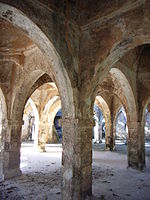
The Great Mosque of Kilwa Kisiwani, made of coral stones is the largest Mosque of its kind.
Ibn Battuta continued by ship south to the Swahili Coast, a region then known in Arabic as the Bilad al-Zanj (“Land of the Zanj”), with an overnight stop at the island town of Mombasa. Although relatively small at the time, Mombasa would become important in the following century. After a journey along the coast, Ibn Battuta next arrived in the island town of Kilwa in present-day Tanzania, which had become an important transit centre of the gold trade. He described the city as “one of the finest and most beautifully built towns; all the buildings are of wood, and the houses are roofed with dīs reeds”.
Ibn Battuta recorded his visit to the Kilwa Sultanate in 1330, and commented favorably on the humility and religion of its ruler, Sultan al-Hasan ibn Sulaiman, a descendant of the legendary Ali ibn al-Hassan Shirazi. He further wrote that the authority of the Sultan extended from Malindi in the north to Inhambane in the south and was particularly impressed by the planning of the city, believing it to be the reason for Kilwa’s success along the coast. During this period, he described the construction of the Palace of Husuni Kubwa and a significant extension to the Great Mosque of Kilwa, which was made of coral stones and was the largest Mosque of its kind. With a change in the monsoon winds, Ibn Battuta sailed back to Arabia, first to Oman and the Strait of Hormuz then on to Mecca for the hajj of 1330 (or 1332).
Itinerary 1332–1347
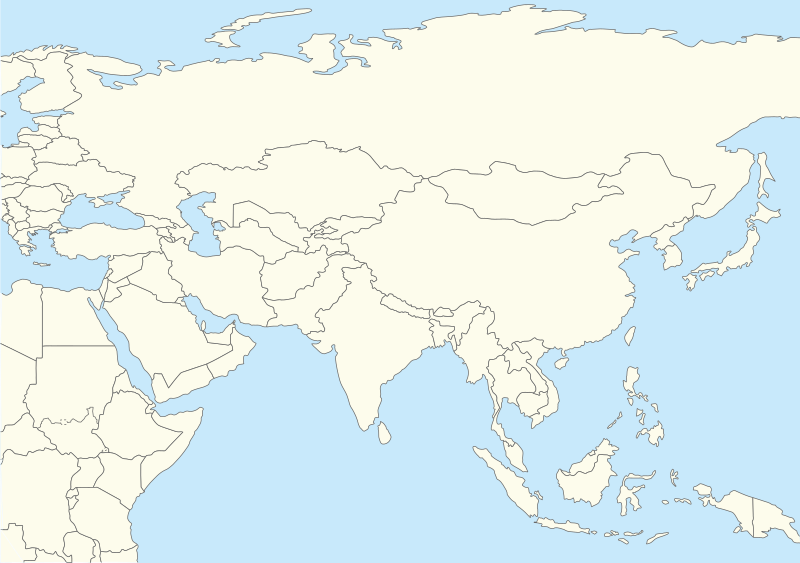
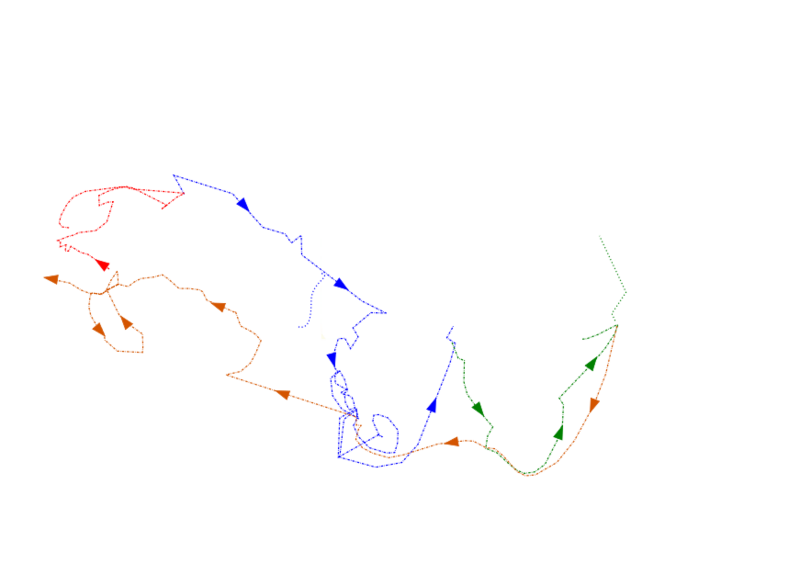
Ibn Battuta Itinerary 1332–1346 (Black Sea Area, Central Asia, India, South East Asia and China)
Anatolia

Ibn Battuta may have met Andronikos III Palaiologos in late 1332.
After his third pilgrimage to Mecca, Ibn Battuta decided to seek employment with the Sultan of Delhi, Muhammad bin Tughluq. In the autumn of 1330 (or 1332), he set off for the Seljuk controlled territory of Anatolia with the intention of taking an overland route to India. He crossed the Red Sea and the Eastern Desert to reach the Nile valley and then headed north to Cairo. From there he crossed the Sinai Peninsula to Palestine and then travelled north again through some of the towns that he had visited in 1326. From the Syrian port of Latakia, a Genoese ship took him (and his companions) to Alanya on the southern coast of modern-day Turkey.
He then journeyed westwards along the coast to the port of Antalya. In the town he met members of one of the semi-religious fityan associations. These were a feature of most Anatolian towns in the 13th and 14th centuries. The members were young artisans and had at their head a leader with the title of Akhis. The associations specialised in welcoming travellers. Ibn Battuta was very impressed with the hospitality that he received and would later stay in their hospices in more than 25 towns in Anatolia. From Antalya Ibn Battuta headed inland to Eğirdir which was the capital of the Hamidids. He spent Ramadan (June 1331 or May 1333) in the city.
From this point his itinerary across Anatolia in the Rihla becomes confused. Ibn Battuta describes travelling westwards from Eğirdir to Milas and then skipping 420 km (260 mi) eastward past Eğirdir to Konya. He then continues travelling in an easterly direction, reaching Erzurum from where he skips 1,160 km (720 mi) back to Birgi which lies north of Milas. Historians believe that Ibn Battuta visited a number of towns in central Anatolia, but not in the order in which he describes.
When Ibn Battuta arrived in Iznik, which had just been conquered by Orhan, Orhan was away and his wife was in command of the nearby stationed soldiers, Ibn Battuta gave this account of Orhans wife: “A pious and excellent woman. She treated me honourably, gave me hospitality and sent gifts.”
Ibn Battuta’s account of Orhan:
“The greatest of the kings of the Turkmens and the richest in wealth, lands and military forces. Of fortresses he possesses nearly a hundred, and for most of his time he is continually engaged in making a round of them, staying in each fortress for some days to put it in good order and examine its condition. It is said that he has never stayed for a whole month in any one town. He also fights with the infidels continually and keeps them under siege.”
— Ibn Battuta,
Ibn Battuta had also visited Bursa which at the time was the capital of the Ottoman Beylik, he described Bursa as “a great and important city with fine bazaars and wide streets, surrounded on all sides with gardens and running springs.”
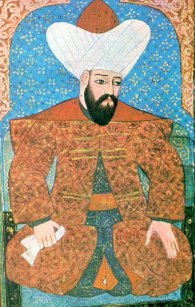
Ottoman miniature painting depicting Orhan, Sultan of the Ottoman Empire from 1326 to 1360.
He also visited the Beylik of Aydin. Ibn Battuta stated that the ruler of the Beylik of Aydin had twenty Greek slaves at the entrance of his palace and Ibn Battuta was given a Greek slave as a gift. In fact his visit in Anatolia was the first time in his travels he acquired a servant, the ruler of Aydin gifted him his first slave, he purchased a young Greek girl for 40 dinars in Ephesus, in Izmir the Sultan gifted him another slave, and in Balikesir he purchased a second girl. The conspicuous evidence of his wealth and prestige continued to grow.
Central Asia

Bactrian camel (one of the symbols of Silk Road caravans) in front of Mausoleum of Khoja Ahmed Yasawi in the city of Turkestan, Kazakhstan.
From Sinope he took a sea route to the Crimean Peninsula, arriving in the Golden Horde realm. He went to the port town of Azov, where he met with the emir of the Khan, then to the large and rich city of Majar. He left Majar to meet with Uzbeg Khan’s travelling court (Orda), which was at the time near Mount Beshtau. From there he made a journey to Bolghar, which became the northernmost point he reached, and noted its unusually short nights in summer (by the standards of the subtropics). Then he returned to the Khan’s court and with it moved to Astrakhan.
Ibn Battuta recorded that while in Bolghar he wanted to travel further north into the land of darkness. The land is snow-covered throughout (northern Siberia) and the only means of transport is dog-drawn sled. There lived a mysterious people who were reluctant to show themselves. They traded with southern people in a peculiar way. Southern merchants brought various goods and placed them in an open area on the snow in the night, then returned to their tents. Next morning they came to the place again and found their merchandise taken by the mysterious people, but in exchange they found fur-skins which could be used for making valuable coats, jackets, and other winter garments. The trade was done between merchants and the mysterious people without seeing each other. As Ibn Battuta was not a merchant and saw no benefit of going there he abandoned the travel to this land of darkness.
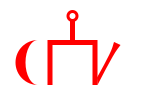
Flag of the Golden Horde, during the reign of Öz Beg Khan
When they reached Astrakhan, Öz Beg Khan had just given permission for one of his pregnant wives, Princess Bayalun, a daughter of Byzantine emperor Andronikos III Palaiologos, to return to her home city of Constantinople to give birth. Ibn Battuta talked his way into this expedition, which would be his first beyond the boundaries of the Islamic world.
Arriving in Constantinople towards the end of 1332 (or 1334), he met the Byzantine emperor Andronikos III Palaiologos. He visited the great church of Hagia Sophia and spoke with an Eastern Orthodox priest about his travels in the city of Jerusalem. After a month in the city, Ibn Battuta returned to Astrakhan, then arrived in the capital city Sarai al-Jadid and reported the accounts of his travels to Sultan Öz Beg Khan (r. 1313–1341). Then he continued past the Caspian and Aral Seas to Bukhara and Samarkand, where he visited the court of another Mongolian king, Tarmashirin (r. 1331–1334) of the Chagatai Khanate. From there, he journeyed south to Afghanistan, then crossed into India via the mountain passes of the Hindu Kush. In the Rihla, he mentions these mountains and the history of the range in slave trading. He wrote,
After this I proceeded to the city of Barwan, in the road to which is a high mountain, covered with snow and exceedingly cold; they call it the Hindu Kush, that is Hindu-slayer, because most of the slaves brought tither from India die on account of the intenseness of the cold.
— Ibn Battuta, Chapter XIII, Rihla – Khorasan
Ibn Battuta and his party reached the Indus River on 12 September 1333. From there, he made his way to Delhi and became acquainted with the sultan, Muhammad bin Tughluq.
India
Tomb of Feroze Shah Tughluq, successor of Muhammad bin Tughluq in Delhi. Ibn Battuta served as a qadi or judge for six years during Muhammad bin Tughluq’s reign.
Muhammad bin Tughluq was renowned as the wealthiest man in the Muslim world at that time. He patronized various scholars, Sufis, qadis, viziers, and other functionaries in order to consolidate his rule. As with Mamluk Egypt, the Tughlaq Dynasty was a rare vestigial example of Muslim rule after a Mongol invasion. On the strength of his years of study in Mecca, Ibn Battuta was appointed a qadi, or judge, by the sultan. However, he found it difficult to enforce Islamic law beyond the sultan’s court in Delhi, due to lack of Islamic appeal in India.

Ibn Battuta in 1334 visited the shrine of Baba Farid in Pakpattan.
It is uncertain by which route Ibn Battuta entered the Indian subcontinent but it is known that he was kidnapped and robbed by Hindu rebels on his journey to the indian coast. He may have entered via the Khyber Pass and Peshawar, or further south. He crossed the Sutlej river near the city of Pakpattan, in modern-day Pakistan, where he paid obeisance at the shrine of Baba Farid, before crossing southwest into Rajput country. From the Rajput kingdom of Sarsatti, Battuta visited Hansi in India, describing it as “among the most beautiful cities, the best constructed and the most populated; it is surrounded with a strong wall, and its founder is said to be one of the great infidel kings, called Tara”. Upon his arrival in Sindh, Ibn Battuta mentions the Indian rhinoceros that lived on the banks of the Indus.
The Sultan was erratic even by the standards of the time and for six years Ibn Battuta veered between living the high life of a trusted subordinate and falling under suspicion of treason for a variety of offences. His plan to leave on the pretext of taking another hajj was stymied by the Sultan. The opportunity for Battuta to leave Delhi finally arose in 1341 when an embassy arrived from Yuan dynasty China asking for permission to rebuild a Himalayan Buddhist temple popular with Chinese pilgrims.
Ibn Battuta was given charge of the embassy but en route to the coast at the start of the journey to China, he and his large retinue were attacked by a group of bandits. Separated from his companions, he was robbed, kidnapped, and nearly lost his life. Despite this setback, within ten days he had caught up with his group and continued on to Khambhat in the Indian state of Gujarat. From there, they sailed to Calicut (now known as Kozhikode), where Portuguese explorer Vasco da Gama would land two centuries later. While in Calicut, Battuta was the guest of the ruling Zamorin. While Ibn Battuta visited a mosque on shore, a storm arose and one of the ships of his expedition sank. The other ship then sailed without him only to be seized by a local Sumatran king a few months later.
Afraid to return to Delhi and be seen as a failure, he stayed for a time in southern India under the protection of Jamal-ud-Din, ruler of the small but powerful Nawayath sultanate on the banks of the Sharavathi river next to the Arabian Sea. This area is today known as Hosapattana and lies in the Honavar administrative district of Uttara Kannada. Following the overthrow of the sultanate, Ibn Battuta had no choice but to leave India. Although determined to continue his journey to China, he first took a detour to visit the Maldive Islands where he worked as a judge.
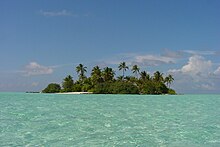
A view of an island in the Maldives.
He spent nine months on the islands, much longer than he had intended. When he arrived at the capital, Malé, Ibn Battuta did not plan to stay. However, the leaders of the formerly Buddhist nation that had recently converted to Islam were looking for a chief judge, someone who knew Arabic and Qur’an. To convince him to stay they gave him pearls, gold jewelry, and slaves, while at the same time making it impossible for him to leave by ship. Compelled into staying, he became a chief judge and married into the royal family of Omar I.
Ibn Battuta took on his duties as a judge with keenness and strived to transform local practices to conform to a stricter application of Muslim law. He commanded that men who did not attend Friday prayer be publicly whipped, and that robbers’ right hand be cut off. He forbade women from being topless in public, which had previously been the custom. However, these and other strict judgments began to antagonize the island nation’s rulers, and involved him in power struggles and political intrigues. Ibn Battuta resigned from his job as chief qadi, although in all likelihood it was inevitable that he would have been dismissed.
Throughout his travels, Ibn Battuta kept close company with women, usually taking a wife whenever he stopped for any length of time at one place, and then divorcing her when he moved on. While in the Maldives, Ibn Battuta took four wives. In his Travels he wrote that in the Maldives the effect of small dowries and female non-mobility combined to, in effect, make a marriage a convenient temporary arrangement for visiting male travellers and sailors.
From the Maldives, he carried on to Sri Lanka and visited Sri Pada and Tenavaram temple. Ibn Battuta’s ship almost sank on embarking from Sri Lanka, only for the vessel that came to his rescue to suffer an attack by pirates. Stranded onshore, he worked his way back to the Madurai kingdom in India. Here he spent some time in the court of the short-lived Madurai Sultanate under Ghiyas-ud-Din Muhammad Damghani, from where he returned to the Maldives and boarded a Chinese junk, still intending to reach China and take up his ambassadorial post.
He reached the port of Chittagong in modern-day Bangladesh intending to travel to Sylhet to meet Shah Jalal, who became so renowned that Ibn Battuta, then in Chittagong, made a one-month journey through the mountains of Kamaru near Sylhet to meet him. On his way to Sylhet, Ibn Battuta was greeted by several of Shah Jalal’s disciples who had come to assist him on his journey many days before he had arrived. At the meeting in 1345 CE, Ibn Battuta noted that Shah Jalal was tall and lean, fair in complexion and lived by the mosque in a cave, where his only item of value was a goat he kept for milk, butter, and yogurt. He observed that the companions of the Shah Jalal were foreign and known for their strength and bravery. He also mentions that many people would visit the Shah to seek guidance. Ibn Battuta went further north into Assam, then turned around and continued with his original plan.
Southeast Asia
In 1345, Ibn Battuta travelled on to Samudra Pasai Sultanate in present-day Aceh, Northern Sumatra, where he notes in his travel log that the ruler of Samudra Pasai was a pious Muslim named Sultan Al-Malik Al-Zahir Jamal-ad-Din, who performed his religious duties with utmost zeal and often waged campaigns against animists in the region. The island of Sumatra, according to Ibn Battuta, was rich in camphor, areca nut, cloves, and tin.
The madh’hab he observed was Imam Al-Shafi‘i, whose customs were similar to those he had previously seen in coastal India, especially among the Mappila Muslims, who were also followers of Imam Al-Shafi‘i. At that time Samudra Pasai marked the end of Dar al-Islam, because no territory east of this was ruled by a Muslim. Here he stayed for about two weeks in the wooden walled town as a guest of the sultan, and then the sultan provided him with supplies and sent him on his way on one of his own junks to China.
Ibn Battuta first sailed to Malacca on the Malay Peninsula which he called “Mul Jawi”. He met the ruler of Malacca and stayed as a guest for three days.
Ibn Battuta then sailed to a state called Kaylukari in the land of Tawalisi, where he met Urduja, a local princess. Urduja was a brave warrior, and her people were opponents of the Yuan dynasty. She was described as an “idolater”, but could write the phrase Bismillah in Islamic calligraphy. The locations of Kaylukari and Tawalisi are disputed. Kaylukari might referred to Po Klong Garai in Champa (now southern Vietnam), and Urduja might be an aristocrat of Champa or Dai Viet. Filipinos widely believe that Kaylukari was in present-day Pangasinan Province of the Philippines. In modern times, Urduja has been featured in Filipino textbooks and films as a national heroine. Numerous other locations have been proposed, ranging from Java to somewhere in Guangdong Province, China. However, Sir Henry Yule and William Henry Scott consider both Tawalisi and Urduja to be entirely fictitious. (See Tawalisi for details.)
From Kaylukari, Ibn Battuta finally reached Quanzhou in Fujian Province, China.
China

Ibn Battuta provides the earliest mention of the Great Wall of China with regard to medieval geographic studies, although he did not see it.
In the year 1345 Ibn Battuta arrived at Quanzhou in China’s Fujian province, then under the rule of the Mongols of the Yuan dynasty. One of the first things he noted was that Muslims referred to the city as “Zaitun” (meaning olive), but Ibn Battuta could not find any olives anywhere. He mentioned local artists and their mastery in making portraits of newly arrived foreigners; these were for security purposes. Ibn Battuta praised the craftsmen and their silk and porcelain; as well as fruits such as plums and watermelons and the advantages of paper money.
He described the manufacturing process of large ships in the city of Quanzhou. He also mentioned Chinese cuisine and its usage of animals such as frogs, pigs, and even dogs which were sold in the markets, and noted that the chickens in China were larger than those in the west. Scholars however have pointed out numerous errors given in Ibn Battuta’s account of China, for example confusing the Yellow River with the Grand Canal and other waterways, as well as believing that porcelain was made from coal.
In Quanzhou, Ibn Battuta was welcomed by the head of the local Muslim merchants (possibly a fānzhǎng or “Leader of Foreigners” simplified Chinese: 番长; traditional Chinese: 番長; pinyin: fānzhǎng)and Sheikh al-Islam (Imam), who came to meet him with flags, drums, trumpets, and musicians. Ibn Battuta noted that the Muslim populace lived within a separate portion in the city where they had their own mosques, bazaars, and hospitals. In Quanzhou, he met two prominent Iranians, Burhan al-Din of Kazerun and Sharif al-Din from Tabriz (both of whom were influential figures noted in the Yuan History as “A-mi-li-ding” and “Sai-fu-ding”, respectively). While in Quanzhou he ascended the “Mount of the Hermit” and briefly visited a well-known Taoist monk in a cave.
He then travelled south along the Chinese coast to Guangzhou, where he lodged for two weeks with one of the city’s wealthy merchants.
From Guangzhou he went north to Quanzhou and then proceeded to the city of Fuzhou, where he took up residence with Zahir al-Din and met Kawam al-Din and a fellow countryman named Al-Bushri of Ceuta, who had become a wealthy merchant in China. Al-Bushri accompanied Ibn Battuta northwards to Hangzhou and paid for the gifts that Ibn Battuta would present to the Mongolian Emperor Togon-temür of the Yuan Dynasty.
Ibn Battuta said that Hangzhou was one of the largest cities he had ever seen, and he noted its charm, describing that the city sat on a beautiful lake surrounded by gentle green hills. He mentions the city’s Muslim quarter and resided as a guest with a family of Egyptian origin. During his stay at Hangzhou he was particularly impressed by the large number of well-crafted and well-painted Chinese wooden ships, with coloured sails and silk awnings, assembling in the canals. Later he attended a banquet of the Yuan Mongol administrator of the city named Qurtai, who according to Ibn Battuta, was very fond of the skills of local Chinese conjurers. Ibn Battuta also mentions locals who worship the Solar deity.
He described floating through the Grand Canal on a boat watching crop fields, orchids, merchants in black silk, and women in flowered silk and priests also in silk. In Beijing, Ibn Battuta referred to himself as the long-lost ambassador from the Delhi Sultanate and was invited to the Yuan imperial court of Togon-temür (who according to Ibn Battuta was worshipped by some people in China). Ibn Batutta noted that the palace of Khanbaliq was made of wood and that the ruler’s “head wife” (Empress Gi) held processions in her honour.
Ibn Battuta also wrote he had heard of “the rampart of Yajuj and Majuj” that was “sixty days’ travel” from the city of Zeitun (Quanzhou); Hamilton Alexander Rosskeen Gibb notes that Ibn Battuta believed that the Great Wall of China was built by Dhul-Qarnayn to contain Gog and Magog as mentioned in the Quran. However, Ibn Battuta, who asked about the wall in China, could find no one who had either seen it or knew of anyone who had seen it.
Ibn Battuta travelled from Beijing to Hangzhou, and then proceeded to Fuzhou. Upon his return to Quanzhou, he soon boarded a Chinese junk owned by the Sultan of Samudera Pasai Sultanate heading for Southeast Asia, whereupon Ibn Battuta was unfairly charged a hefty sum by the crew and lost much of what he had collected during his stay in China.
Battuta claimed that the Mongol Khan (Qan) had interred with him in his grave six slave soldiers and four girl slaves. Silver, gold, weapons, and carpets were put into the grave.
Return
After returning to Quanzhou in 1346, Ibn Battuta began his journey back to Morocco. In Kozhikode, he once again considered throwing himself at the mercy of Muhammad bin Tughluq in Delhi, but thought better of it and decided to carry on to Mecca. On his way to Basra he passed through the Strait of Hormuz, where he learned that Abu Sa’id, last ruler of the Ilkhanate Dynasty had died in Iran. Abu Sa’id’s territories had subsequently collapsed due to a fierce civil war between the Iranians and Mongols.
In 1348, Ibn Battuta arrived in Damascus with the intention of retracing the route of his first hajj. He then learned that his father had died 15 years earlier and death became the dominant theme for the next year or so. The Black Death had struck and he stopped in Homs as the plague spread through Syria, Palestine, and Arabia. He heard of terrible death tolls in Gaza, but returned to Damascus that July where the death toll had reached 2,400 victims each day. When he stopped in Gaza he found it was depopulated, and in Egypt he stayed at Abu Sir. Reportedly deaths in Cairo had reached levels of 1,100 each day. He made hajj to Mecca then he decided to return to Morocco, nearly a quarter of a century after leaving home. On the way he made one last detour to Sardinia, then in 1349, returned to Tangier by way of Fez, only to discover that his mother had also died a few months before.
Itinerary 1349–1354
